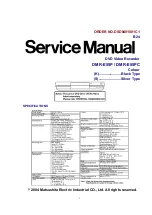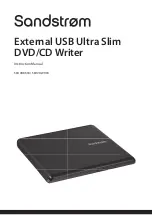
3.7 CD-R/ RW technology
Differences between CD-R/CD-RW discs and standard CD
The main physical difference between these two disc types and the standard prerecorded CD (audio
CD or CD-ROM) is that the latter has no recording layer; the information is permanently stamped in
the aluminium reflecting layer.
The CD-R and CD-RW discs
CD-R and CD-RW discs have the same basic disc structure but with significant detail differences. The
CD-R disc has a dye-based recording layer, with a reflectivity of 40 - 70 %, while the CD-RW disc has
a phase-change recording layer with a reflectivity of 15 - 25 %.
Both discs have an additional reflecting layer: golden for the CD-R, which accounts for that disc's
distinctive appearance, and silver (aluminium) for the CD-RW.
Both disc types have a track spiral, which is preformed during manufacture, onto which the audio data
is written during the recording process. This track ensures that the recorder follows the same spiral
pattern as a conventional CD, and has the same width of 0.6 mm and pitch of 1.6 mm as a
conventional CD. In addition to the spiral pattern, the track has a slight superimposed sinusoidal
excursion of ± 0.3 mm at a frequency of 22.05 kHz.
















































